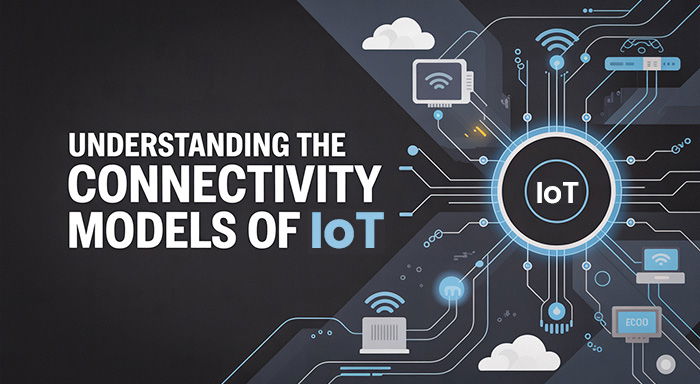Understanding the Connectivity Models of IoT

The Internet of Things (IoT) is rapidly transforming how we interact with the world. From smart homes to industrial automation, IoT systems are reshaping our lives by connecting billions of devices to the internet. But at the core of this technology lies a fundamental aspect that determines how these devices communicate: the connectivity models of IoT.
To understand how devices interact in an IoT ecosystem, it’s crucial to explore these connectivity models and how they align with the physical and logical design of IoT.
What Are IoT Connectivity Models?
Connectivity models define how devices (or "things") connect, communicate, and exchange data in an IoT system. These models help structure the flow of information and determine the network architecture, data transmission methods, and the roles of different devices. There are four main connectivity models commonly used in IoT:
1. Device-to-Device (D2D) Model
In the D2D model, devices communicate directly with each other using technologies like Bluetooth, Zigbee, or Wi-Fi Direct. This model is ideal for applications that require fast, localized communication without relying on a central gateway or cloud service.
- Use Case Example: Smart light bulbs and motion sensors interacting directly to automate lighting in a room.
-
Relation to Design: The physical and logical design of IoT in this model emphasizes local networking capabilities and minimal reliance on cloud infrastructure.
2. Device-to-Gateway (D2G) Model
In this model, IoT devices connect to a local gateway, which aggregates data and manages communication with the cloud or other systems. The gateway acts as a bridge, handling protocol translation, data processing, and security.
- Use Case Example: A smart home hub collecting data from various sensors and sending it to a cloud server.
-
Relation to Design: This model heavily influences the physical design (gateway placement and connectivity) and logical design (data routing and processing flow).
3. Device-to-Cloud (D2C) Model
Here, IoT devices connect directly to cloud services using Wi-Fi, cellular networks, or LPWAN technologies like NB-IoT. This model is common in consumer electronics and industrial monitoring applications.
- Use Case Example: A smart thermostat sending temperature data directly to a cloud dashboard.
Relation to Design: The logical design includes cloud APIs and data management systems, while the physical design requires internet-ready devices with appropriate network modules.
4. Back-End Data-Sharing Model
This model enables multiple IoT systems to share data through cloud-based applications or centralized data repositories. It is particularly useful for data analytics and cross-domain integrations.
- Use Case Example: City-wide traffic and weather data shared among different municipal departments.
Relation to Design: Emphasizes a scalable logical design for data interoperability and secure APIs, along with a robust physical design to support data collection and storage.
Why Connectivity Models Matter
Choosing the right connectivity model affects everything from network efficiency and scalability to security and cost. It’s not just a technical choice—it’s a strategic decision that shapes the physical and logical design of IoT systems.
Factors to consider when selecting a connectivity model include:
- Number of devices
Type and frequency of data transmission-
Power consumption
Network reliability
Latency and real-time requirements
Final Thoughts
Connectivity models are the backbone of any IoT implementation. Understanding them helps engineers and businesses make informed decisions that align with the broader goals of their IoT deployments. By considering both the physical and logical design of IoT, organizations can build smarter, more efficient, and scalable systems that truly leverage the power of connected devices.
Related Post:
What is a UGC Creator and How to Become One in 2025?
